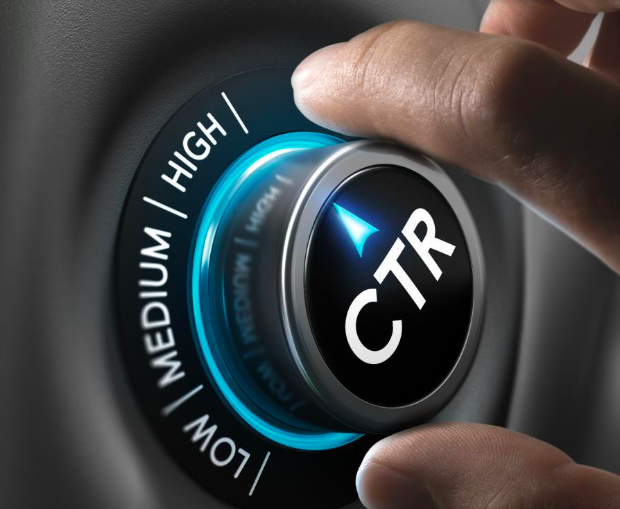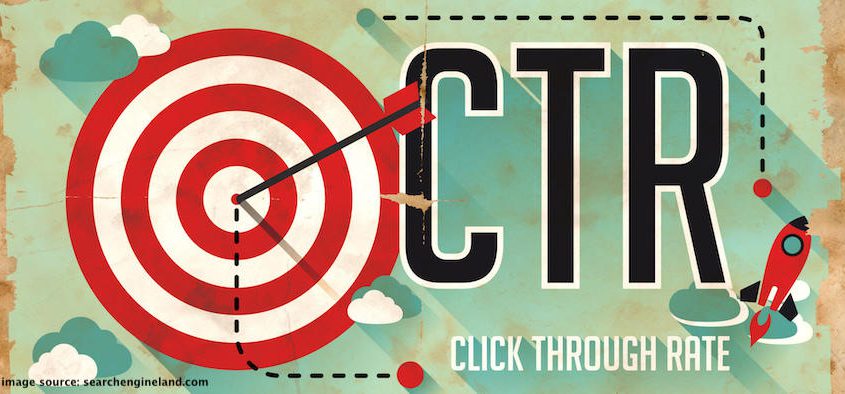Monitoring the success of your digital campaign rests on several key factors. One of these key factors is an important but often overlooked metric; click-through rate. The metric often tends to get overshadowed by other metrics such as cost-per-click and the number of purchases made by a customer. Cost-per-click is just one part of the whole picture and will shed little light on the success of your marketing campaign without taking into account other key metric indicators.
Learn how Conversational Technology works, Request a FREE demo today and Increase CTR.
The click-through rate (CTR) measures how frequently an ad or page was clicked compared to how often it was viewed. A high CTR directly affects your quality score and the amount you pay each time someone clicks on your advertisement. The average CTR on AdWords is somewhere around 2%, a higher number doesn’t necessarily mean you’re on the right track though. CTR is very industry specific, so while 2% may be high for a nutritionist business, it might be considered too low for a paid publication. Remember that it is easier for you to gain an increment on your CTR and conversion rates than to try increasing traffic to your website. You can’t just snap your fingers and bring new visitors out of thin air.
There are subtle changes you could make to your ad or content which can profoundly impact the CTR of your digital campaign such as:
- Making sure that the background of the ad has a different contrast to the website’s overall look and theme. If the ad blends in with the rest of the page, it really wouldn’t capture the reader’s attention, will it?
- Once the reader does happen to look at the ad or page, your next step would be to ensure that the headline is capable of maintaining that attention. Using catchphrases such as “Watch this video”, “Phenomenal success with weight loss” will eventually push the reader to click on the ad. Remember that you’re dealing with human psychology and are finding ways of piquing a person’s interest – the numbers only reflect how well you’ve been able to grab a person’s attention.
- Sometimes it is not a good idea to make your ads stick out too much from the rest of the content on the website. The more your ad resembles the colour thematic of the website, the higher are the chances that users will click on it. It is even better if the ad and content actually helps to supplement the information already present on the website.
Related:
The Secret Sauce for a Successful Digital Marketing Strategy
Why Click-through Rate (CTR) is Important
1. Directly affects your Quality Score
Think of the quality score as your credit score. A bad credit score hampers your chances of qualifying for a loan, similarly, a lackluster quality score will increase the price you pay for each click. On the flip side, a higher quality score means Google will be charging you less per ad click, while simultaneously placing your ad and content at a higher rank.
2. It will help you understand what kind of messages matter to your customers
Since CTR is directly affected by how frequently a user clicks on them, a higher percentage will indicate if your ads or content are properly able to communicate with the audience or not. CTR can effectively help you fine-tune messages so the next time someone sees it, they will spontaneously click on it.
3. Target the right kind of audience
Although a large portion of readers might be able to spot your ad on a particular website, only a small portion actually want to click on it. You might be wondering why? Your keywords are not accurately geared towards attracting customers from your particular niche. For instance, if your ad contains the word ‘nutrition’, it may be seen by readers looking for nutritional pills rather than nutritional tips. A giant portion of your digital budget might be going to waste by reaching the wrong kind of audience who might be accidentally clicking on your ads, inflating your CTR percentage slightly so, but never translates to a call to action.
4. Predict offline conversions
According to Google, only around 45% of people that search for products online go through with transactions, instead preferring to make their purchase offline by making a visit to the retailer. The CTR percentage can be used as an indication of a customer’s interest level for your product. So while their curiosity might not actually translate to a call of action such as filling a form or making a purchase, it might strongly correlate to offline purchases.
5. Higher CTR score equals lower cost per click
The way Adwords decides your ad’s price is by multiplying your quality score with the bid price. A high-quality score significantly reduces your cost per click. The quality score itself is a function of CTR; the rule of thumb is that a higher CTR results in a higher quality score.

